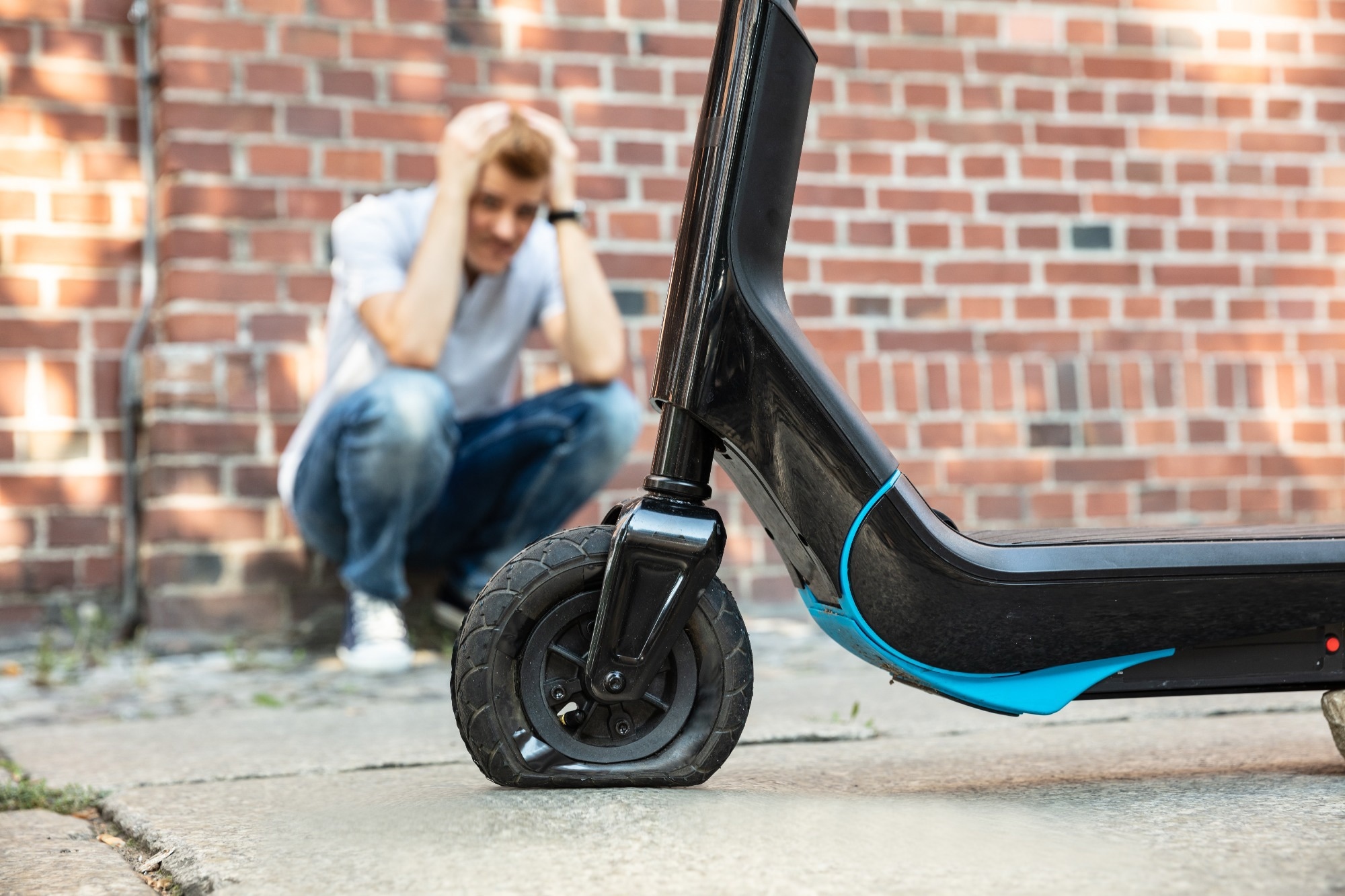Young, helmetless, and often under the influence, stand-up e-scooter riders are landing in Helsinki emergency rooms at much higher rates than cyclists, spotlighting urgent safety gaps in urban mobility.
 Study: Comparing the characteristics of electric scooter and bicycle injuries: a retrospective cohort study. Image Credit: Andrey_Popov / Shuttertock
Study: Comparing the characteristics of electric scooter and bicycle injuries: a retrospective cohort study. Image Credit: Andrey_Popov / Shuttertock
In a recent study published in the journal Scientific Reports, a group of researchers quantified and contrasted the incidence, severity, and risk factors of stand-up electric scooter (e-scooter) and bicycle injuries.
Background
Picture a Friday night downtown: neon lights flash, rideshares queue, and wheels buzz past traffic. Micromobility keeps streets moving, yet prior studies estimate about 10 riders in every 100,000 land in an emergency department (ED) after a stand-up e-scooter spin, but the Helsinki-specific rate was 7.8 per 100,000 trips. This is about triple the toll for bicycles. Unlike cars, these platforms offer no crumple zone; the rider is the bumper.
Younger adults, late-night trips, alcohol, and helmets left at home create a risky mix. Knowing how scooter crashes differ from bicycle crashes can guide speed caps, safety campaigns, and lanes. Further research must confirm which measures truly flatten the injury curve.
About the study
The team conducted a cohort analysis of stand-up e-scooter and bicycle injuries treated in three EDs between January 1, 2022, and December 31, 2023. Anonymized cases were mined with keyword searches from the hospital data pool, and records were screened to confirm a crash. Age, sex, timing, helmet use, alcohol testing, and injury details were abstracted. The most severe lesion was coded with the Abbreviated Injury Score (AIS), and the composite New Injury Severity Score (NISS) captured trauma burden.
Usage denominators came from two sources: trip logs supplied by the Vianova Cityscope service for shared scooters and survey-derived estimates of cycling trips. Injury incidence per 100,000 trips and relative risk (RR) with 95% confidence interval (CI) were computed.
Continuous variables with a Gaussian distribution are reported as means and standard deviation (SD); proportions are given as counts and percentages. Statistical comparisons employed Fisher’s exact, chi-squared (χ²), or Student’s t tests as appropriate, with significance set at 0.05. Analyses followed the STROBE checklist and were executed in SPSS version 29. The hospital research committee approved the protocol and waived informed consent, and all procedures complied with local regulations.
Study results
In the two-year window, EDs treated 677 stand-up e-scooter riders and 1,889 cyclists for crash-related trauma. Mean age: 33 ± 13 versus 47 ± 17 years; males constituted 64% and 59%, respectively. Helmet adoption was scarce among scooter riders, just 29 individuals (4%), contrasting with 522 helmeted cyclists (28%). Alcohol played a major role, as tests and notes indicated intoxication in 29% of scooter riders versus 8% of cyclists.
Linking injuries to exposure revealed a sharper disparity. Shared scooter logs recorded 8.06 million trips, yielding an ED incidence of 7.8 injuries per 100,000 trips. Survey-based estimates suggested 82.98 million cycling trips, corresponding to 2.2 injuries per 100,000 outings. The resulting RR for scooter travel was 3.6 (95% CI: 3.3–3.9), underscoring a risk more than triple that of bicycling.
Injury patterns also diverged, as head and neck trauma occurred in 46% of scooter crashes compared with 31% of bicycle crashes, while cyclists bore more upper extremity (45%) and torso (11%) injuries. Craniofacial fractures were the archetypal scooter break (12%), whereas wrist and hand fractures dominated cycling injuries (9%). The AIS distribution skewed mildly for both modes, yet scooters had a slightly higher share of serious wounds (10% versus 8%). The single critical scooter case involved diffuse axonal injury (DAI), whereas one cyclist experienced multiple intracranial hemorrhages.
Resource consumption reflected these profiles. Eight scooter riders (1.2%) required admission to an intensive care unit (ICU), seven with head trauma and six who were intoxicated. Cyclists registered 12 ICU stays (0.6%). Operative management was more common after cycling crashes (13%) than scooter crashes (8%), largely because orthopedic teams plated fractured wrists, clavicles, and ribs. Overall, inpatient admission rates were low, yet cyclists again edged scooters (9.8% versus 8.1%).
Sixty-nine percent of cycling accidents occurred between 8 a.m. and 10 p.m., while 60% of scooter accidents occurred during these hours, and 40% occurred overnight. Half of the nighttime scooter crashes involved alcohol, compared with one-fifth of nocturnal cycling crashes. Among intoxicated riders, helmet use was rare. Despite a 15 km/h night limit on rentals since 2021, summer evenings still produced dense clusters of alcohol-linked head injuries among commuters. This trend persisted across seasons and facilities.
Conclusions
To summarize, this comparative analysis indicates that stand-up e-scooter travel currently carries a higher injury burden than traditional cycling. Scooter riders were younger, more often intoxicated, seldom helmeted, and especially vulnerable to head trauma, whereas cyclists primarily injured arms and torso but required more surgery.
Even with speed caps, the RR remained 3.6, suggesting that behavior, not technology, drives harm. Municipalities should prioritize helmet campaigns, integrate alcohol checks into rental apps, and consider further nighttime restrictions.
Future prospective studies should test whether such interventions, together with redesigned lanes, reduce ED visits and ICU admissions. As with all retrospective observational studies, caution is advised when interpreting causality, and incomplete or missing data may influence findings.
Journal reference:
- Seitakari, L., Pakarinen, O., Harjola, V.-P., Castrén, M., & Vasara, H. (2025). Comparing the characteristics of electric scooter and bicycle injuries: a retrospective cohort study. Sci Rep. 15. DOI: 10.1038/s41598-025-12627-x, https://www.nature.com/articles/s41598-025-12627-x